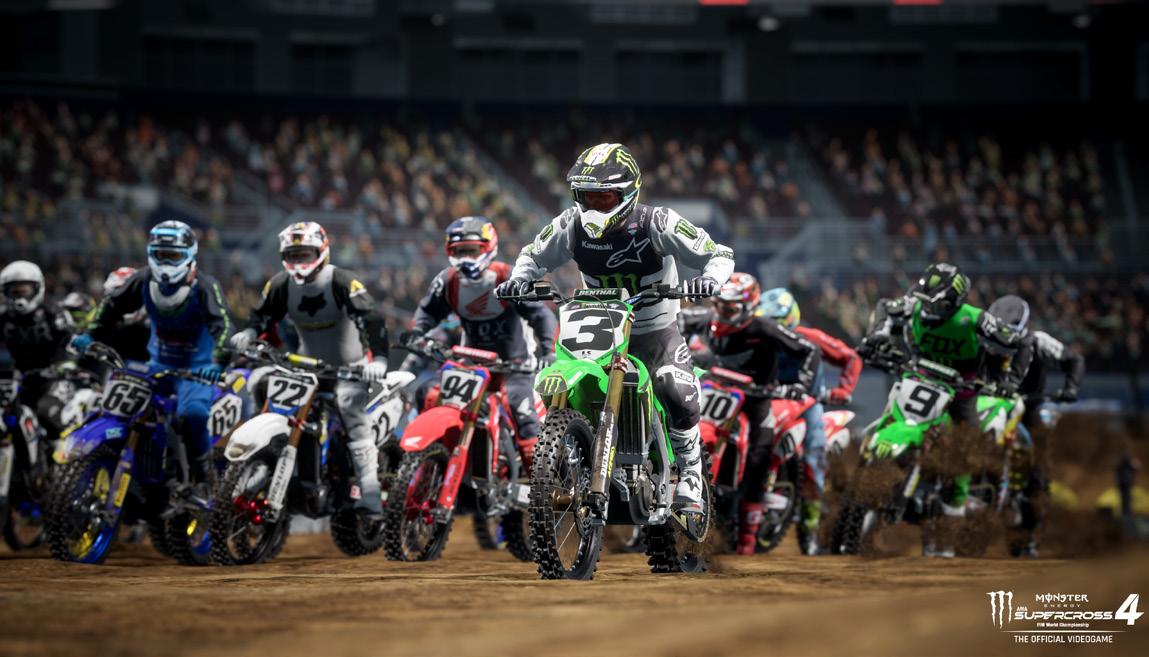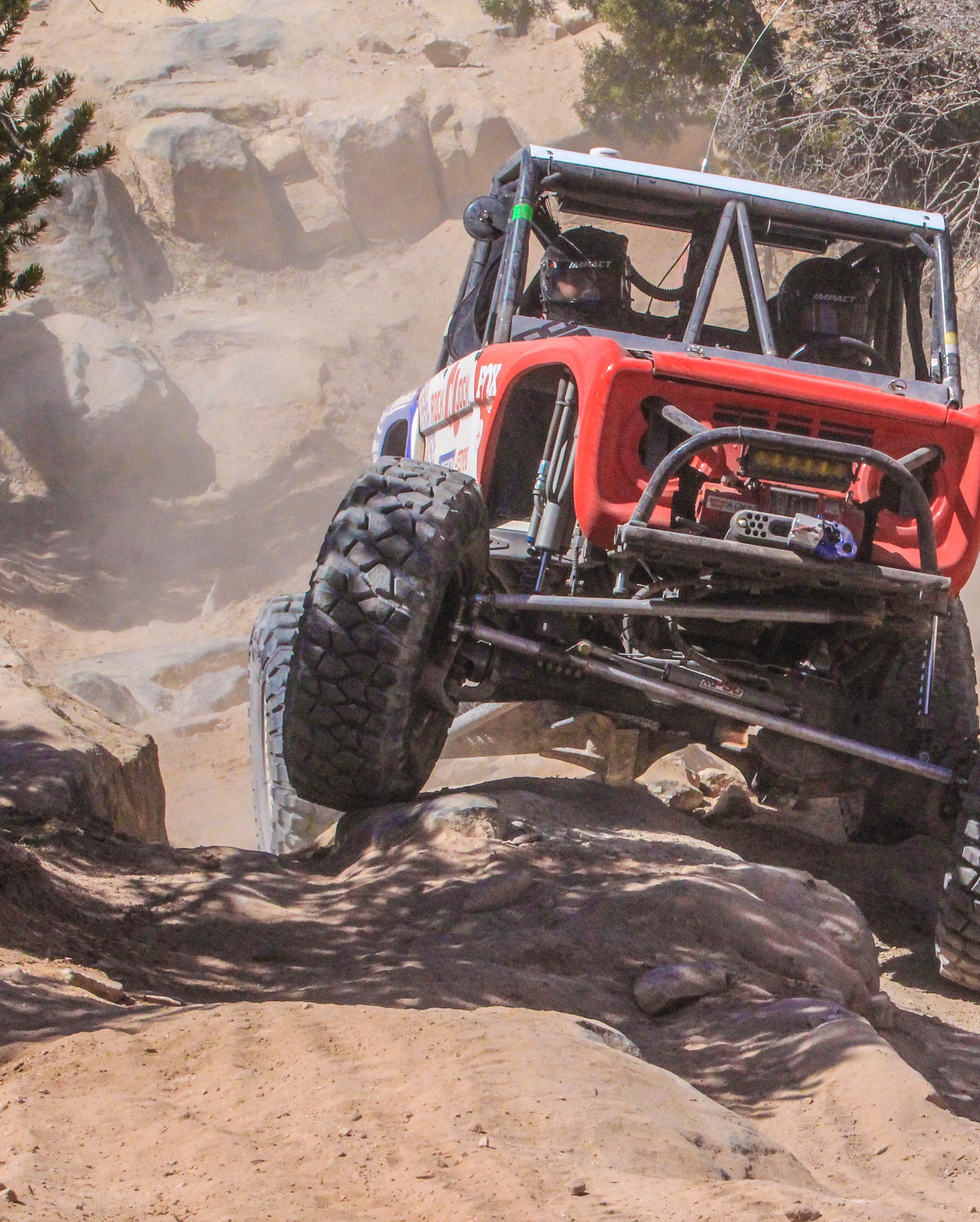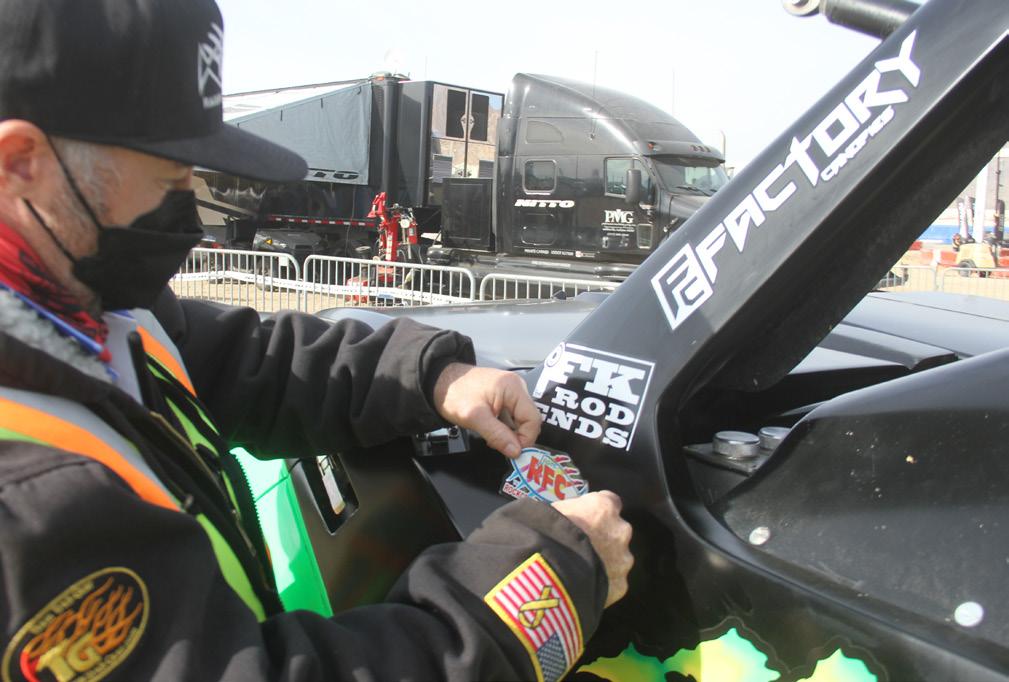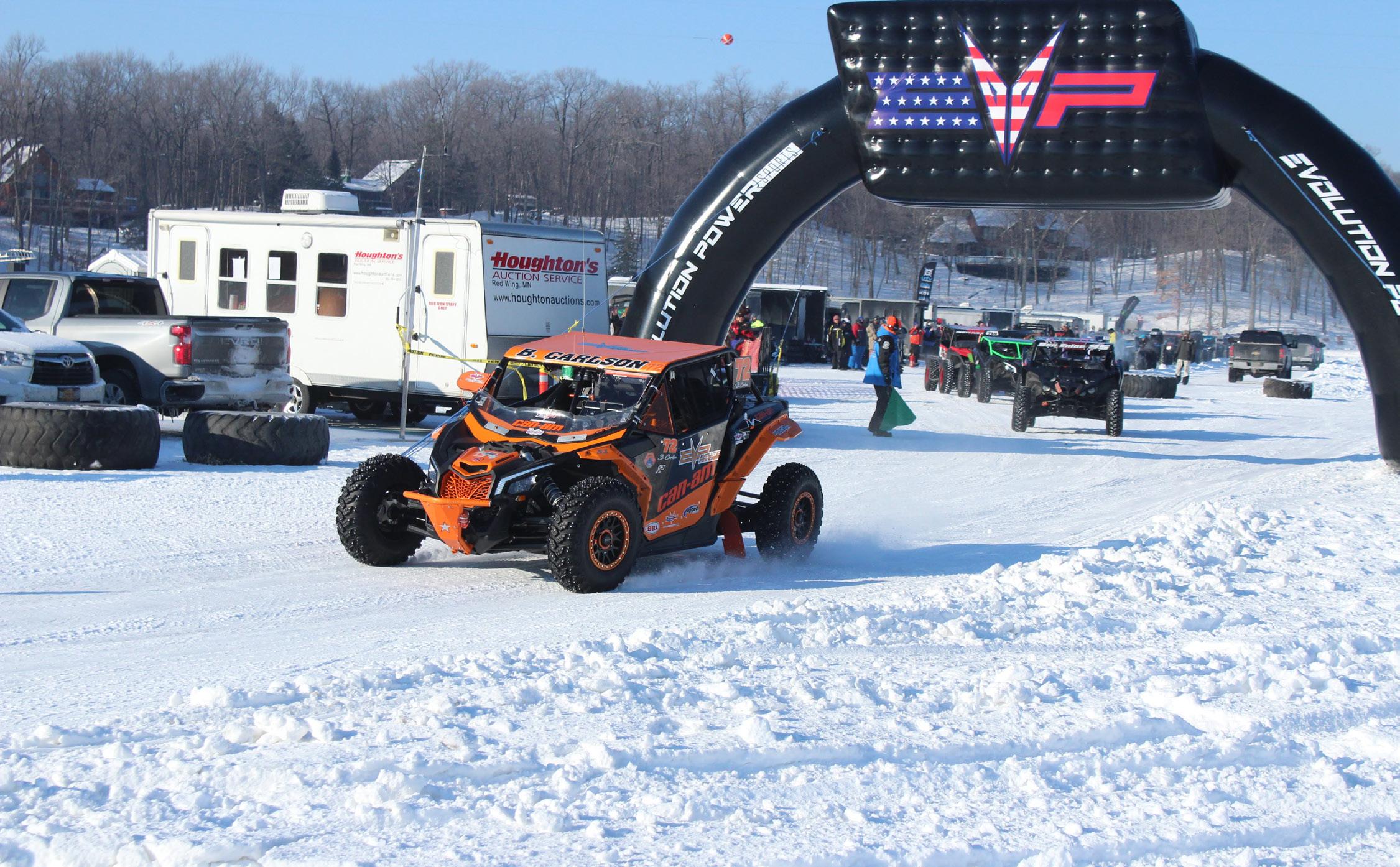
3 minute read
THE ICEMAN 500
SLIP, SLIDING ON THE ICE AT THE ICEMAN 500
Story: Shaun Ochsner Photos: Courtesy of Iceman 500
Advertisement
Every year our friends in the Midwest get a little restless during the winter. They don’t have the warm year-round sunny weather to go out play with their off-road toys. By mid-fall the leaves have turned, the temperatures hover in the twenties and thirties and snow frequently falls from the sky. In the winter time, the snow stays on the ground and temperatures can reach single digits. That really doesn’t stop the die-hard racer. In a small Western Wisconsin town, or village if you will, sits Balsam Lake. In the summer time, this 2,000-acre property is the backdrop for some of the best bass fishing. When the lake is frozen, it is home to the Iceman 500. The event is held each year in February.

What exactly is the Iceman 500? It is one of the fastest UTV races around held in the snow and ice of course. Now in its 5th year, some of the best UTV racers from all over come to Balsam Lake to participate in the event. The course is 500 miles of slipping and sliding around Formula 1 style on the frozen lake. $15,000 in purse winnings were up for grabs. Winner take all! Racers had eight hours to complete fifty laps. In previous years, the race was split into two days.
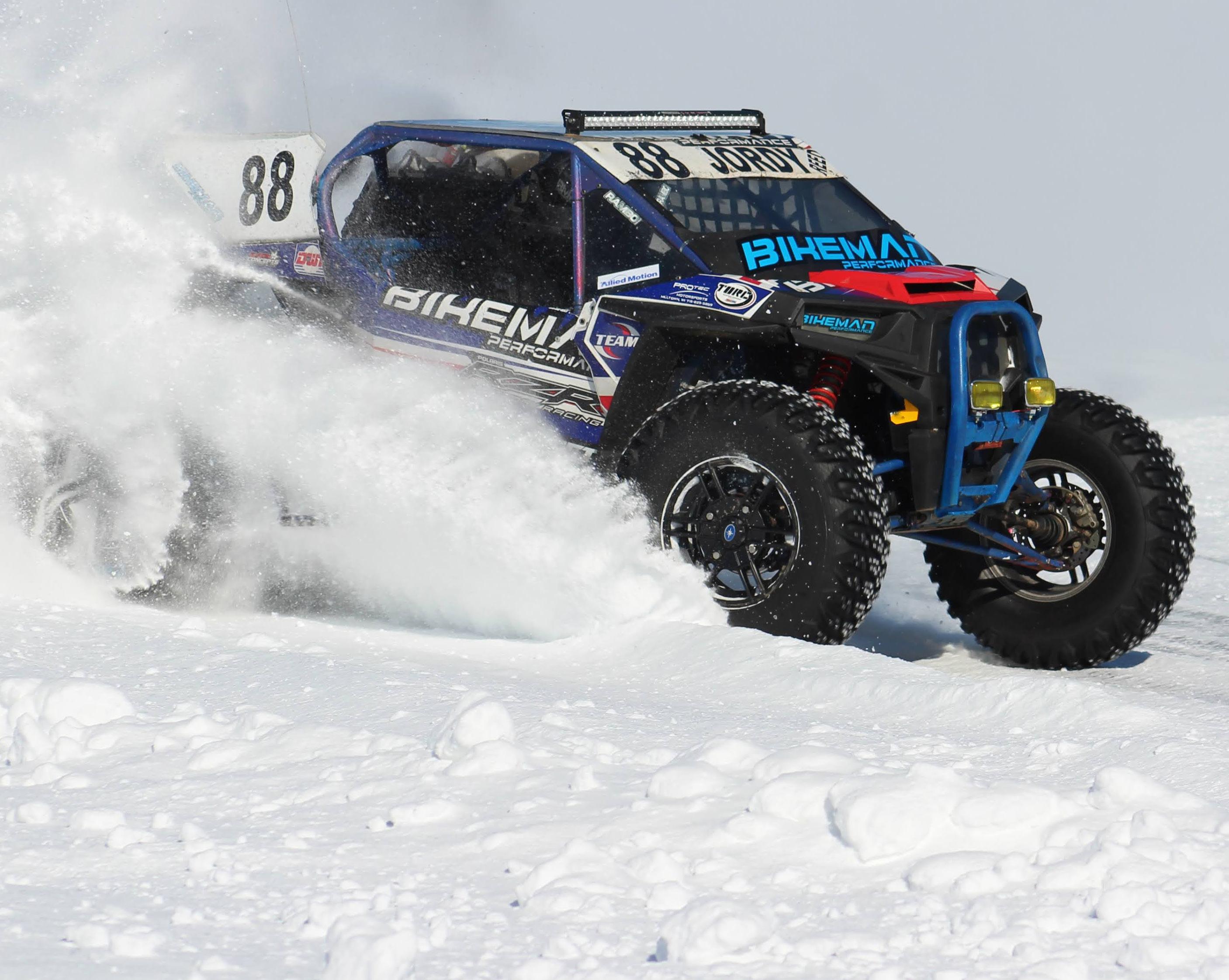


UTV Forty-nine racers hit the ice for the single day of racing. The top recorded speed was 106-mph in one of the fastest stretches of track. Keep in mind these are UTV’s we are talking about. Yes, some are turbocharged, but many don’t even achieve these speeds in some of the smoothest terrain in Baja. Gaining maximum performance can be especially tricky in cold situations. Parts seize up, motors don’t exactly want to run at top speeds. Keeping things warm is part of the racing strategy before the green flag even drops. You then have eight hours to keep your UTV running at top speed. Engines can overheat even in the cold when they are running for long periods of time. Unless you are running high performance shock fluid, those can also be frozen before the race begins. Ice racers face the same problems a desert racer does. Flat tires and broken suspension parts and of course rolled over vehicles!


The classes were divided up between ProMod, Pro-Stock and Sportsman. The secret to gaining on traction on an ice track is to have metal studs installed in your tire of choice. Standard safety gear is required including race suit and helmet, safety nets on your UTV, harness, and fire extinguishers. Brad Minerick and Ryan Mulder took this year’s victory in a Can Am X3. Andy Ives put a Polaris on the podium in second place. Over in the Pro-Stock class, it was a one-two punch for Yamaha with Blake Enloe in first and Mike Vold in second. Justin Ogg and Nick Reeder took home the victory in the Sportsman Class. Bryce Carlson recorded an 82-mile an hour lap earning him the fast lap award.
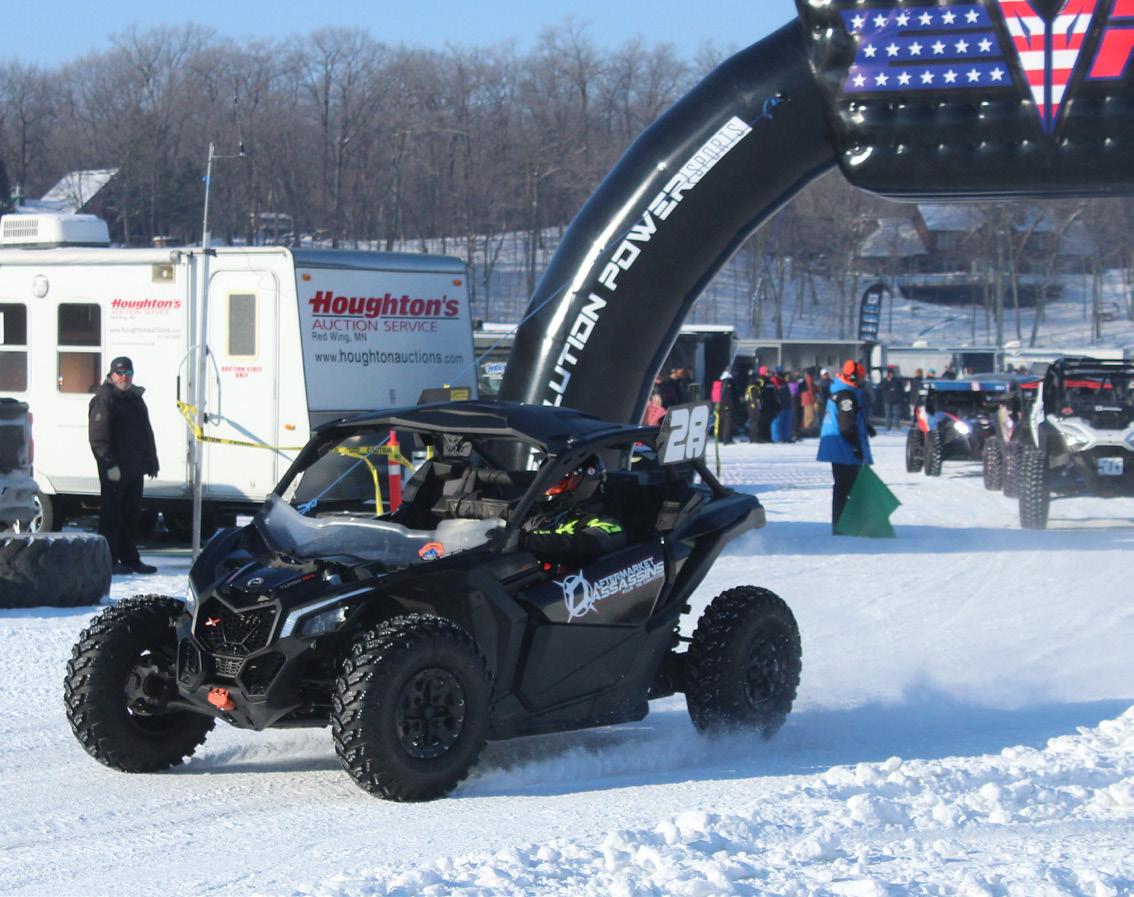
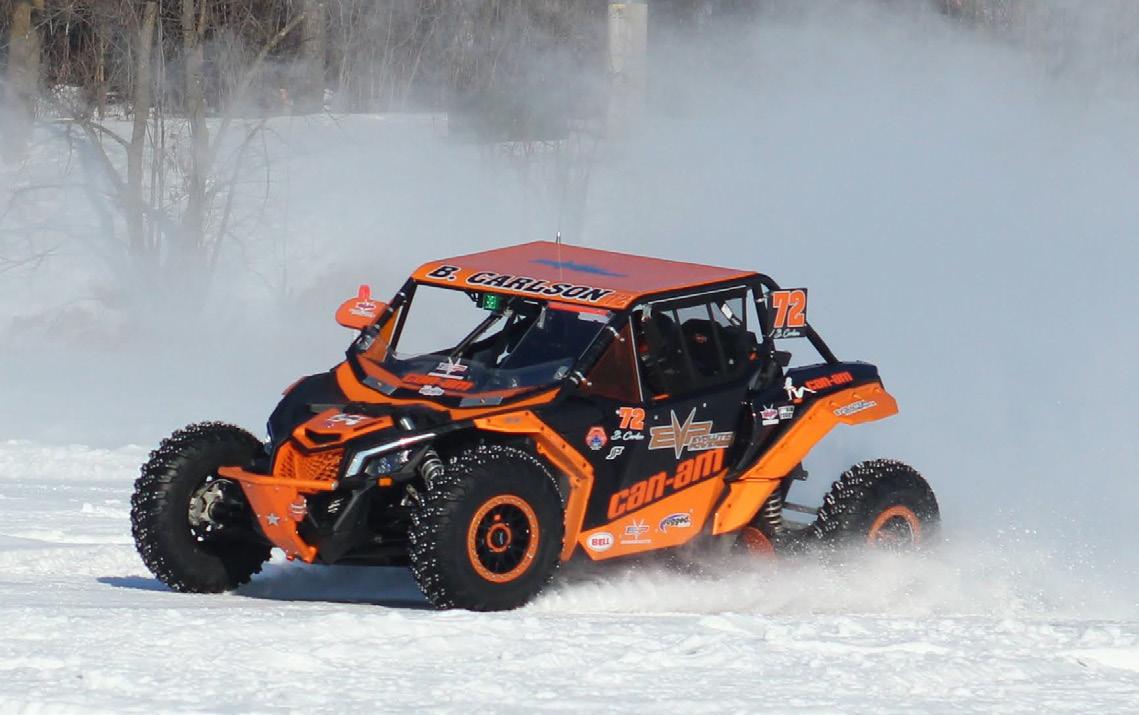

A weekend Warrior Race was added this year. It was a ten-lap race to give those an opportunity to see what ice racing was all about. Minimum safety modifications were could only be done to their UTV. Those running the weekend warrior race were not allowed to race the main event the next day. It was an affordable way to get them hooked on building a competitive car for next year’s race.



